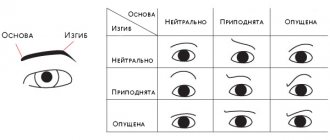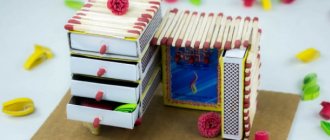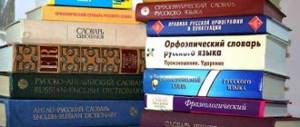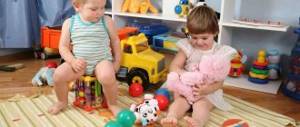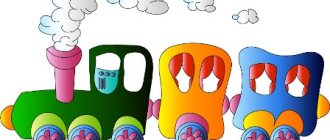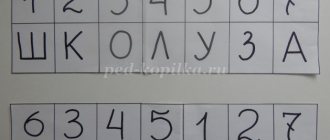A sports hour was introduced into the school day to provide schoolchildren with rest after several lessons and to gain strength for subsequent educational activities.
Considering that in an extended day school there is a lack of free time when children could demonstrate their physical activity, it is unacceptable to waste time on a passive walk. It is active, rather than passive, rest that is considered the most effective. During rest, children should engage in physical exercise, participate in outdoor games and sports entertainment.
Everyday active rest provides children of primary school age with 40–45% of the daily volume of movements.
Sports hour is outdoor physical exercise conducted during the school day. The sports hour provides schoolchildren with the opportunity for active recreation, which is necessary to relieve fatigue from educational activities, and also helps to increase the motor activity of children. Outdoor activities are very important from a health point of view.
Sports hour is one of the forms of physical education that helps solve the following problems:
- creating conditions for entertainment and physical relaxation for children;
- improvement and restoration of the physical condition of schoolchildren;
- improving vital skills acquired in physical education lessons;
- strengthening students' interest in physical education and sports activities.
The specific tasks of the sports hour include:
- relieving mental stress among schoolchildren;
- avoiding excessive fatigue;
- providing opportunities for effective rest;
- increasing student performance;
- strengthening health, improving physical development and motor readiness of children.
According to numerous studies, active outdoor recreation, which consists of games of low and medium mobility and lasting 1.5 hours, has a beneficial effect on the functional state of the central nervous system of schoolchildren, as does rest for 1 hour. As a result, children improve mental performance and mobility of nervous processes.
Recreation indoors rather than outdoors does not have the same positive impact on student performance. The effect of such rest is even lower than from unorganized rest on the street.
The sports hour very successfully contributes to solving problems of cultivating interest and the need for independent physical exercise, and also gives children knowledge about outdoor games and relay races, and develops in schoolchildren the ability to play in an organized manner in a team.
The place of the sports hour as a type of physical education and health work in the school day is closely related to the patterns of students’ performance during the school day.
Thus, all schoolchildren are characterized by an increase in working capacity from 8 to 11 a.m., and then a gradual decrease and an intense decline by 2 p.m. At the same time, the mobility of nervous processes noticeably decreases. It should be noted that in younger schoolchildren the level of performance is generally lower, and the period of maximum performance is shorter.
Thus, in a school with an extended day, working in one shift, the most suitable time for holding a sports hour is after 12 o’clock, that is, the time when performance begins to decline. It is advisable to carry out a dynamic pause after sleep, and for students in grades 2–4, you can choose the time before and after preparation. Therefore, the optimal times in the daily routine for a sports hour are from 12.00 to 13.00 and from 17.00 to 18.00.
The following requirements are put forward for conducting a sports hour:
- classes should be conducted in a gentle manner;
- ensuring the participation of all children in classes, incl. exempt from physical education;
- giving classes a general developmental character (no need to develop special sports abilities);
- mandatory presence of game moments;
- organization of motor activity based on natural skills and skills developed in physical education lessons;
- involving high school students and parents in classes.
It is necessary to treat with special care and attention those students who are not confident in their physical strength or cause the laughter of other children with their clumsiness. Such children should be protected from the ridicule of their comrades and disdainful attitude. And also the teacher must ensure that arrogance and demonstration of physical superiority do not appear in the group.
Students who are temporarily or permanently exempt from physical education classes for health reasons go to the GPD. Such children need to be treated with sympathy; they should not be deprived of the opportunity to move, because they especially need it. Such children can be offered a special program for participation in classes, developed with the help of the school doctor and physical education teacher. In some cases, it is possible to restrain their activity, but at the same time engage in physical development. For example, they can be offered the role of presenter, judge or person in charge.
Contents of physical education and health activities during the sports hour
With all its diversity, physical education and health work should be accessible to younger schoolchildren, taking into account their age characteristics and capabilities. The following types of movements can be considered available:
- walking: normal; slow, fast walking around the perimeter of the site; with various movements of the arms, legs, torso; walking on toes and heels;
- running: slow, fast; with the execution of tasks on a signal; with overcoming simple obstacles (jumping over a “ditch” marked by lines, running along a log, climbing over a fence or other structures, etc.); running alternating with walking, etc.;
- jumping: on two legs, on one leg, in place, forward; jumping rope, hoop, etc.;
- ball exercises: throwing and catching large and small balls; throwing balls in pairs; throwing balls at a distance or at various targets, etc.;
- climbing: climbing, creeping, climbing through hoops, ladders, fences and other structures on the playground;
- hangs, stops on children's crossbars, fences and other structures on the site;
- balance exercises: walking along a narrow line, a log, without objects or with objects, overcoming obstacles (stepping over a ball, a tight rope, etc.);
- exercises with objects: with balls, hoops (rolling hoops, jumping through hoops, vertical torsion of a hoop, rotating a hoop around the body, etc.), with skittles, with serso (throwing rings on a stick), with short and long jump ropes (jumping in place and in motion, one at a time, two at a time, etc.);
- exercises for the arms, legs, head, torso (on the spot, while walking, in games like “Comrade Commander!”, “Forbidden Movement”, etc.);
- outdoor games: with formations and formations, with general developmental exercises, running, jumping, throwing, overcoming obstacles, resistance;
- relay races: with walking, running, jumping, throwing, sledding, skiing, etc.;
- sports entertainment: riding scooters, bicycles, roller skates, double and regular skates, sleds, skis; elements of the game of badminton; entertainment with volleyball, basketball, soccer ball, hockey sticks, etc.
The content of the sports hour, which includes natural types of movements (walking, running, etc.), outdoor games and relay races, sports entertainment, corresponds to the educational material of the physical education program for grades 1–4 and complements it, and also contributes to better assimilation and strengthening motor skills, increases children’s motor experience and generally promotes their motor development.
Game and competitive methods are best suited for competitions. Competitions between classes, the fight for the honor of their class, help unite the children's team and increase interest in physical exercise in general and the sports hour in particular, enrich students' leisure time with positive emotions, and help increase the mobility of nervous processes. The competitive method thus provides faster and more effective relief from mental fatigue.
Organization of physical education and health activities during sports hour
Sports hour as one of the main forms of physical education can be divided into three parts:
1. Preparatory part (10–15 min).
It begins from the moment children arrive at the playground. The content of this part of the lesson: formation, organizational instructions from the teacher, walking and slow running 300–500 m around the site in a column one at a time, general developmental exercises (while walking, or in a circle, or in games like “Comrade Commander!”).
Walking and running at the beginning of the sports hour are an effective means for activating and training the cardiovascular and respiratory systems. These types of movements contribute to faster saturation of the blood with oxygen, improve blood and lymph circulation, and relieve congestion. Walking, running and general developmental exercises act as preparatory actions before subsequent physical activity.
2. Main part (30–40 min).
It consists of outdoor games and relay races common to the entire group, sports entertainment, as well as independent outdoor games and sports entertainment.
Collective outdoor games and relay races carry a great emotional charge and contribute to a faster and more complete switch of children to another type of activity. This kind of rest is the most beneficial. Active movements help develop speed, agility, speed-strength qualities, strength and endurance, and also enrich the motor experience of schoolchildren and their knowledge of outdoor games.
Independent and paired games and sports entertainment, as well as games and entertainment in small groups, more fully satisfy the individual inclinations of schoolchildren for various types of motor actions and contribute to further relaxation.
3. Final part (5–7 min).
Provides an organized end to active recreation. The content of this part includes: formation of students, calm walking around the site, or several attention exercises. It is necessary to bring the children’s bodies into a relatively calm state so that subsequent educational activities (self-preparation) are effective.
The sports hour necessarily includes the organized arrival of children to the playground and return to school.
The structure of any physical exercise class and the sports hour in particular is dictated by psychophysiological and pedagogical motives.
Carrying out a sports hour requires a competent dosage of physical activity. If the load is not enough, the desired physiological effect will not be achieved, which means the value of active recreation will decrease; Excessive physical activity can cause fatigue, which will negatively affect subsequent educational activities.
It should be remembered that the level of physical fitness of schoolchildren may vary. If one of the children shows signs of fatigue (shallow rapid breathing, redness of the face, profuse sweating), the intensity of the load should be reduced. To do this, you can suggest an exercise to restore breathing: 4 steps - inhale, 4 steps - exhale (repeat 4-6 times).
Heart rate helps to more accurately assess physical activity. For 3-4 students with different levels of physical fitness, the heart rate is determined for 10 seconds and multiplied by six. It is convenient to measure heart rate at the wrist. After 4 minutes of running, schoolchildren's heart rate should be in the range of 140–170 beats per minute.
It is necessary to ensure that children wear sportswear during the sports hour.
If the sports hour is held outdoors, you should adhere to the temperature regimes established for the given area by local health and education authorities.
The teacher organizes and conducts a sports hour in a group or class. The responsibilities of the teacher include:
- choosing a place for active recreation;
- organization and equipment of playgrounds;
- providing children with sports equipment during exercise, taking care of its storage location;
- responsibility for the correctness and timeliness of the sports hour.
The physical education teacher assists the teacher in organizing the sports hour: helps to select practical material (outdoor games, relay races, sports games and entertainment, etc.), advises on the methodology for conducting the sports hour.
Organization and conduct of outdoor games, incl. relay races must comply with the following methodology:
- before the game (relay race), the participants must be positioned so that they can clearly see and hear the teacher, and the teacher can control the attention and interest of the students;
- the teacher should outline the content of the upcoming game (name, placement of participants, course of the game and its rules, methodology for determining results);
- If necessary, the teacher can involve students in demonstrating individual episodes.
When the teacher makes sure that the children understand the content and rules of the game well, he can, depending on the conditions of the game, divide the students into teams or choose drivers. In some games, schoolchildren (especially students in grades 2–3) can choose drivers themselves or divide into teams. The attendants are instructed to place object landmarks and draw lines required by the conditions of the game; distribute sports equipment (balls, hoops, jump ropes, scooters, skates, skis, etc.).
After the students are divided into teams, judges are selected (from those students who, for some reason, are exempt from physical exercise), the teacher gives the command to start the game. During the game, the teacher’s task is to monitor its progress, compliance with the rules and behavior of the children, their emotional state, and also to activate sedentary participants. The teacher can, if necessary, make adjustments to the game and make appropriate comments. In the process of outdoor play, special attention is paid to instilling in schoolchildren such moral qualities as collectivism, camaraderie, mutual assistance, honesty, activity, desire and will to win, the ability to take into account the interests of the team and obey the rules of the game. When summing up the results of the game, the teacher should note both positive examples of children’s behavior during the game and undesirable facts.
It must be remembered that a sports hour should not turn into an ordinary walk. The opinion of some educators that such rest is more beneficial for children is when no one interferes with their games, and children need to be given “freedom” of action. This opinion is explained by the fact that in this case it is easier for the teacher to walk with the children and monitor discipline.
The effectiveness of physical education and health work in extended-day groups directly depends on the state of the school’s material resources: playgrounds, sports equipment and places for its storage.
The school organizing the GPA must have a school site for students to spend their holidays. To organize the sports hour most effectively, the school site should be divided into sectors - separate playgrounds for different classes. A separate, permanent play area for each class helps keep students organized, helps teachers better supervise children, and facilitate more successful physical activities. In such conditions, schoolchildren’s rest will be more complete, and the presence of their own playground will teach children to maintain cleanliness and order in the play area.
Playgrounds with asphalt surface are considered more convenient because... Games and relay races can be held on them even after rain, which is hardly possible on grass or earthen grounds. Asphalt coating allows you to apply the markings necessary for holding games, relay races, and sports entertainment. The lines can be painted in different colors, which will help children navigate the markings. In addition, bright colors will give the playground a festive look and convey positive emotions to children.
Colorful markings of playgrounds alone are not enough for children to have successful active recreation. Playgrounds should be equipped with various types of structures: slides, stairs, stepladders, etc. These structures add variety to the motor activity of children, giving them the opportunity to climb, clamber over, creep through, crawl, overcome obstacles, practice balance, roll down mountains, do hangs and stops, roll over on crossbars, throw at a target, etc. The placement of structures should be carried out taking into account the free space for outdoor games, relay races, and sports entertainment. The best placement of structures is along the perimeter of the site.
In winter, the markings for games are hidden under the snow, and the structures no longer arouse such interest in children as in the fall or spring. The content of the sports hour changes: snow, ice, ice tracks and slides come to the fore. Most of the classes are devoted to skiing and skating, as well as corresponding games and relay races: downhill sledding, skiing, plywood, sliding on your feet along an ice path.
In winter, therefore, playgrounds should be equipped with slides, skating rinks, ice paths, and ski tracks.
In good weather, the sports hour should be held exclusively outdoors; if the weather is inclement, rainy, it is too cold or windy outside, a long stay of children outside is undesirable, and then the sports hour is held indoors (corridors, recreation areas, classrooms, gyms, Assembly Hall). In such conditions, the nature of active recreation and physical exercise is fundamentally different.
For active recreation, you need sports equipment, without which independent games and entertainment for children are impossible, and a sports hour will not give the necessary effect. In the absence of sports equipment (ball, jump rope, hoop, etc.), it will be difficult for the leader to get the children to move during independent games.
It is advisable that each after-school group have a set of rubber balls - 5-10 pieces of different diameters (large, medium, small); 15–20 pieces of short jump ropes and 3–5 pieces of long ones; 10–15 hoops; 5–10 pairs of badminton rackets; 2–4 sets of pins; set of multi-colored flags, clubs, tambourines, whistles.
Most of the equipment can be stored in the classroom: this is convenient for constant use both during sports hours and during walks, and it also increases the class’s responsibility for the condition and safety of equipment, teaches students to take care of equipment, care for it, and repair it in a timely manner.
Sports equipment such as sleds, skis, scooters must be stored in a specially equipped room with separate sections for each class. Other options for storing inventory are acceptable, provided that it will be available for daily use.
Practice of holding a sports hour outdoors
Part I. Line up one at a time. Organizational messages. Walking in a column one at a time (regular, on toes, on heels, in a half-squat, in a squat, with movements of the arms, legs, and torso). Running slowly, alternating with walking.
Part II.
1. Game "Challenge".
Those playing with the help of a counting rhyme are divided into two equal teams. Each team chooses a captain. On opposite sides of the site, at a distance of 15–20 meters from one another, city lines are drawn, between which a middle line is drawn. Both teams line up on opposite sides behind their city line. At the signal, the captain of the team that was chosen by lot to start the game sends one of his players to the opposite city. This player must run to the enemy team, touch one of the players with his hand and manage to return to his city.
Rules of the game.
The one touched by the runner must try to catch him to the halfway line. If he manages to do this, then the player who touched him is eliminated from the game. When summing up the results, the loser is the team with fewer players left.
2. Knocking down sports grenades placed in a line on the ground with a basketball.
3. Game "Hold by the tail."
The driver is chosen - a wolf. The rest of the players are sheep. All players form a circle, in the center of which sits a wolf, pretending to be asleep. The sheep, moving in a circle, sing a song, gradually narrowing the circle, trying to touch the wolf. The wolf suddenly jumps up and begins to catch the sheep. The caught sheep becomes a wolf and the game continues.
Instructions for the game.
The wolf begins to catch sheep at any moment, but not before the first touch. Game option. The game is played in such a way that the caught sheep help the wolf catch the players. Players can walk in a circle performing various movements (walking on their toes, walking on their heels, raising their knees high, dancing, etc.).
Part III. Summing up the games. Form students on the starting line in a line. Calming breathing exercises. The attendants collect equipment, the group in a column returns to the school one by one.
Practice conducting a sports hour in the classroom
Part I. Organizational exercises and instructions from the teacher. General developmental exercises such as gymnastics before classes, standing at or near a desk.
Part II. Organized games.
Game "Calling numbers".
The players sit at their desks. Each row is a team. In each team, children are assigned numbers: those sitting at the first desk - first numbers, those sitting at the second desk - second numbers, etc. The teacher calls the number - and the children, for example, draw a flower, perform a specific movement, stand up quickly, etc. General The result is determined by the sum of first, second, third places. The game is repeated several times, and each time with a new task.
Game "Vegetables, fruits, berries."
Each row is a team. Each row is assigned the name “vegetables”, “fruits”, “berries” respectively. The teacher names the types of vegetables, fruits, and berries. The team to which the named culture belongs must stand up and perform certain movements. The other teams are sitting at this time. During the game, some movements are replaced by others.
Game “What has changed?”
Pictures are hung or arranged on the board. Students remember the order in which they hang (stand). Then the children are asked to stand up, turn their backs to the board and perform 1-2 exercises. At this time, the teacher rehangs (rearranges) 1-2 pictures. At the signal, students sit down and determine what has changed. The game is repeated several times, and each time the teacher suggests doing other exercises.
Part III.
Game "Hot and cold".
Children hide an object (for example, a tennis ball) in the classroom, and the leader who leads the students while chanting “hot” or “cold” must find the object (“cold” children say when the driver is far from the object, and “hot” - when he is close to him).
Sports hour in the GPD. Development
Sports hour in an extended day group. Development
1. Reception of children.
Topic: outdoor games of the peoples of the North. Goal: 1.Acquaintance with new games. 2.Development of endurance, agility, courage. 3. Fostering activity and collectivism; love for nature. Material: ball, jump rope (hoop) Venue: sports ground Time : 35 min.
Progress:
I. Formation. Warm -up We stand at arm’s length. Listen to me carefully and repeat the movements. “Everyone woke up early in the morning and had a good stretch. The backs all bent together - So the muscles rested. We must bow to our earthling mother at the waist. Turn to the right. To the left Our body has become flexible. We rise higher and higher - We pulled our hands towards the sun, lowered them and shook them. We inhale the air through our noses and walk on the spot. And like a clumsy bear, with its paws spread wide, we will go, guys, into the forest. The forest there is full of miracles. We saw a hare in the forest, Together with the bunny we galloped - Jump-jump, jump-jump, Let's go from heel to toe. Don’t make noise, be quieter, be quieter. With small steps, as if mice were running through the bush, we found ourselves in a clearing. And like birds we will dance. Let's wave our hands smoothly. We warmed up well, we'll do it again tomorrow. You are my friend, and I am your friend - Let’s all stand in a huge circle, We wish everyone good health, Let’s begin our games. II. Outdoor games. -Today in our forest you and I will play games of the peoples of the North. 1. Game “good morning, hunter”! Two “shepherds” are chosen, the rest are “deer”. The “deer” stand inside the circle, the “shepherds” are outside the circle, opposite each other. At the leader’s signal (1,2,3 – catch!), the “shepherds” take turns throwing the ball at the “deer”, who run away from the ball. The “deer” that was hit by the ball is considered to have left the herd and been caught. After 4-5 throws, the number of caught “deer” is counted (the ball should be thrown only at the feet of the players. 2. Game “Reindeer Retrieval” The players stand in a circle, the driver - the “hunter” - walks behind the players. Suddenly the “hunter” touches one of the players. This player turns and says: “Good morning, hunter!", Then they walk in a circle in opposite directions. Having gone around half a circle, the player and the “hunter” meet, the player again says: “Good morning, hunter! ", Then both run back, to take the remaining empty space. The one who did not have time to do this becomes a “hunter.” 3. Game “2 frosts” (Red Nose. Blue Nose) Together: “We are two young brothers, two daring frosts: Red Nose: Frost - Red Nose. Blue Nose: Frost - Blue Nose. Together: Which of you decides to hit the road. The guys in chorus: “We are not afraid of threats, and we are not afraid of the cold!” They come running from one “city” to another. The frosts catch them. Whoever is hit is considered “frozen” (they stand in this position). If there are more “frozen” ones, the game ends. 4. Game “Kill the Bear” Players stand in a circle. B) the “bear” is sitting, next to his “guard”. They hold the ends of the jump rope (hoop) with both hands. Players carefully move towards the “bear” and the “guardian”, trying to “kill the bear”, i.e. touch him. During the “attack”, the “bear” cannot leave his place and the rope. The player on whom the rope was thrown is considered caught and runs out of the game. Repeat 2 times) III. Result. -Stand in a circle. Let's quickly hold hands and merge into one ring. Hands closer - small circle: You are my friend, and I am your friend. Legs higher - top, top, top. And clap your hands - clap, clap, clap. Our children frolicked and bowed low to the “forest.” We will take care of nature and we will not get sick with you. We wish everyone good health. Let’s all go to class together. _ Well done, guys! Class is over. Let's go to class.
We recommend watching:
Summary of an extracurricular activity for students in grades 3-4 Sports competitions in elementary school in the GPA Fun relay race for elementary school Sports and entertainment game for elementary school, grades 2-3
Similar articles:
Tournament of Russian language experts, grades 2-3
Entertaining material for the GPA
Lesson at the GPD on the topic “Folk arts and crafts”
Conversations about the rules of conduct in an after-school group
Job description of a GPA teacher
Bibliography:
- Antropova M.V., Manke G.G., Borodkina G.V. Physical development and health status of students // Healthcare of the Russian Federation. – M.: 1986.
- Baranov A.A., Matveeva N.A. Health of schoolchildren (Ways to strengthen it). – Krasnoyarsk: Publishing house. Krasnoyarsk University, 1989.
- Barantsev, S.A. Educational and health work in schools and extended day groups / S.A. Barantsev. - M., 1988.
- Brynzarei Yu.G. Extended day group: theory and practice. Mozyr: White Wind, 2020.
- Bushkanets Sh.G. The essence of schoolchildren’s free time // Primary school. – 1988. – No. 8. - With. 71 – 74.
- Zhukov M.N. “Outdoor Games”, Moscow: Higher Education, 2000. - 157 p.
- Kovalko V.I. Health-saving technologies in elementary school. 1-4 grades. - M.: “VAKO”, 2004.
- Kryuchek, E.S., Aerobics. Contents and methods of conducting health-improving classes / E.S. Kryuchek - M.: Publishing house "Terra - Sport", Olympia Press, 2001, - 64 p.
- Levchuk S.V. Educational work in an extended day group. - ARKTI, 2007.
- Favorite children's games: for activities with children of senior preschool and primary school age/comp. Grishina G.N. – M.: Sphere shopping center, 1999.
- Minskin E.M. Games and entertainment in an after-school group: A manual for teachers. - M.: Education, 1983.
- Handbook for physical education teachers / Ed. L.B. Kofman. – M.: Physical culture and sport, 1998.
- Ogorodnikov A. A. Contents and methods of educational work in an extended day group. - M.: Education, 1988. - 208 p.
- Organization and content of work in an extended day group. Practical guide. Primary school/ I.N.Popova. – M.: Iris Press, 2006. – 130 p.
- Chaytsev, V.G., Pronina, I.V., New technologies for physical education of schoolchildren: A practical guide / Chaytsev V.G., Pronina I.V. – M.: ARKTI Publishing House, 2007.- 128 p.
Lesson in the GPD, 1st grade. Journey to the Land of Health
Lesson on the topic: Healthy lifestyle for younger schoolchildren in the GPD
Topic of the lesson: Journey to the land of Health Goal: creating conditions for students to develop ideas about proper nutrition and a healthy lifestyle. Objectives: introduce children to the rules of dental care, reinforce the concepts of caring and eye care; consolidate the concepts of proper nutrition and personal hygiene rules; promote the development of children's creative abilities; cultivate a desire for a healthy lifestyle. Equipment: presentation, cards with proverbs and riddles.
Progress of the lesson
- Today, we have an unusual activity.
This activity is very “useful”. In these classes we will talk about health and everything connected with it. And today, you will learn how to get to the land of health. The gift received from nature is not a ball or a balloon. This is not a globe, not a watermelon - Health. Very fragile cargo. To live a happy life, you need to maintain your health. But as? Now I’ll tell you what I know myself - I’ll tell you everything. - And your favorite cartoons will help me with this - Smeshariki - To travel, we need to choose a type of transport. Guess what we'll be traveling on? A house is walking down the street, taking us to work. Not on thin chicken legs, but in rubber boots. (bus) - We take our seats, drive off (they sit down, adjusting their position at their desks). Our companions will be Nyusha and Barash. And the motto of our team will be: We know how to think, We know how to reason, What is good for health, That’s what we will choose! — And so that we don’t get bored while traveling, we’ll play a little with you: To get to the Land of Health as quickly as possible, you need to take part in unusual competitions. Competition 1. “Folk wisdom” Compose proverbs from scattered words - cards, explain their meaning. “A healthy person is a rich person” “To live clean is to be healthy” “A healthy mind in a healthy body” “Health is more valuable than gold” Competition 2. “Riddles” Two neighbors are restless. A day at work. night on vacation (eyes) I've been wearing them for many years. But I don’t know how many they count (hair) They race all their lives, But they can’t catch up with each other (legs) It is much smaller than us, But it works every hour (heart) Between two luminaries In the middle I am alone (nose) Five brothers have the same job (fingers) Competition 3. “What? Where? When?" 1.What is this medicine that is being listened to? (Music) 2. What is the most valuable thing in the world? (Health) 3. What are you never too lazy to do? (Breathe) - So, the first stop is “Clean Hands Street”. Hedgehog meets us here. Haven't you seen the dirt on your hands? And in the dirt there lives an infection, invisible to the eye! If you sit down to lunch without washing your hands, all this infection will go to your stomach! - What do we need to prevent this from happening? — Soap, towel, water. - Absolutely right. It is necessary to strictly observe hand and nail hygiene to avoid contracting infectious diseases that are transmitted through dirty hands. Be sure to wash your hands with soap and warm water. If the skin of your hands is dry, be sure to lubricate them with cream. Wellness moment. With your right hand, massage each finger of your left hand. Do the same with your right hand. Try to pay attention to each joint, rubbing it thoroughly. The fingers are connected to the brain and internal organs. Massage of the thumb increases the activity of the brain, the index finger improves the functioning of the stomach, the middle finger improves the functioning of the intestines and spine, the ring finger improves the functioning of the liver, and the little finger helps the functioning of the heart. Do the same at home with your feet. — Guys, there are many proverbs and sayings about our hands. Let's try to explain the meaning of some. 1. The eyes are afraid, but the hands are doing. (When you start a big business, it can be scary, but as soon as you start work, you calm down and see what is starting to work out. Usually this is how they encourage each other when starting work, or rejoice at its successful completion.) 2.Golden hands. (Dexterous, fast, skillful hands.) 3. Without him, it’s like without hands. (importance of some subject). 4.My hands are tied. (a person who cannot do anything). We continue our journey, and while we are moving on, we will solve the riddle. Brother and brother live across the path, but they don’t see each other. — And we get to the “Glaznoy Lane” stop. Eyes are our helpers. They help us see, navigate, look for food, read, write. Everyone has eyes: birds, fish, animals, insects, but all animals see differently. A bee sees a hundred times worse than a human; its eye consists of small eyes. Fish also see poorly. Besides, they see everything in gray. And the mole's eyes are overgrown with skin. After all, he leads an underground lifestyle and does not need eyes. The most vigilant creatures are birds! They see eight times better than a human. Even if a person is not so sharp-sighted, and in the dark he does not see like an owl, but his eyes are our main helpers and we must take care of them. What is good and bad for our eyes? The game “Good-Harmful” - read while lying down - look at bright light - watch TV at close range - protect your eyes from shock - wash your eyes in the morning - rub your eyes with dirty hands - read in good lighting Eye exercises. Look at the beauty around you (circular rotation of the eyes, now in one direction, then in the other direction). And now they blinked their eyes like butterflies with their wings. Look into the distance (out the window), and now look close. They closed their eyes and stood there with their eyes closed. We opened our eyes. Don't forget these exercises and do them, then your vision will be excellent. We continue our journey and find ourselves on “Tooth Avenue”. Look how sad Nyusha is, she is telling something to her friends. My life suddenly became bad: I had a bad toothache! There is no urine, I need to treat a sick tooth. - Why do you think Nyusha’s teeth hurt? (The tooth is damaged, there is a hole in it). — Why did the damage occur? (Nyusha ate a lot of sweets - she and Barash ate cake.) - What is the name of the doctor who treats teeth and who will help Nyusha? Remember! — Brush your teeth twice a day – morning and evening. — Eat less sweets, more vegetables and fruits. — If you have a toothache, go to the doctor immediately. Next stop. Cafe “Bon Appetit” - We will talk about unhealthy and healthy foods. Before we sit down at the table, we will think about what to eat. (The teacher names the food, the guys choose a group and check by clicking) - Select and arrange foods that are healthy for the body into baskets (work on the board with colored chalks) Explain your opinion. Fish, chewing gum, chips, kefir, rolled oats, Cola drink, carrots, onions, cakes, apples, buckwheat, candies, milk. — What new things did you learn from the trip? - And to make it easier for you to remember these rules and use them in life, we will make a reminder brochure for you. But to do this, we need to remember in order, what rules did we learn today? IN A HEALTHY BODY HEALTHY MIND.
We recommend watching:
Extracurricular activity for elementary school Synopsis of an extracurricular activity for younger schoolchildren Synopsis of a thematic walk in an elementary school Synopsis of a thematic walk in an elementary school. There is no bad weather
Similar articles:
Lesson notes for the GPD. Introduction to the responsibilities of duty officers
Summary of a lesson in the GPA on the topic: Aquarium fish
Scenario of classes in an extended day group for grades 1-2
Lesson notes for the GPD. Vegetable garden on the windowsill
Lesson notes for the GPD. A corner of nature. Plants of a corner of nature
